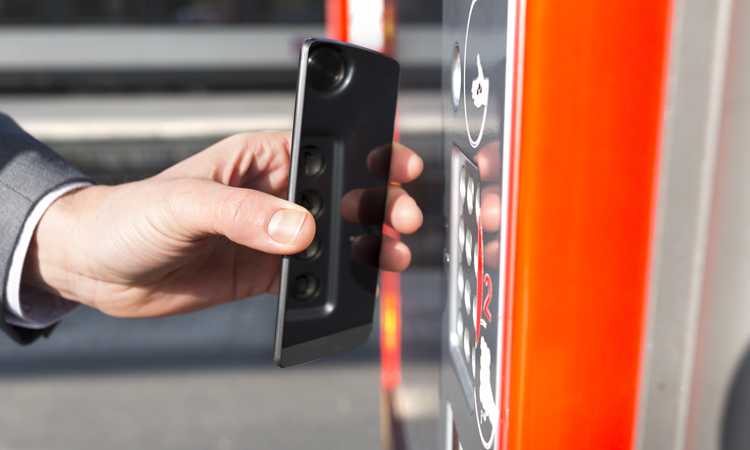What has smart ticketing ever done for us?
- Like
- Digg
- Del
- Tumblr
- VKontakte
- Buffer
- Love This
- Odnoklassniki
- Meneame
- Blogger
- Amazon
- Yahoo Mail
- Gmail
- AOL
- Newsvine
- HackerNews
- Evernote
- MySpace
- Mail.ru
- Viadeo
- Line
- Comments
- Yummly
- SMS
- Viber
- Telegram
- Subscribe
- Skype
- Facebook Messenger
- Kakao
- LiveJournal
- Yammer
- Edgar
- Fintel
- Mix
- Instapaper
- Copy Link
Posted: 18 October 2018 | Steve Howes | No comments yet
Ahead of 2018’s Intelligent Transport Conference, Steve Howe, UK Representative of FAIRTIQ – a Platinum Sponsor of the Conference – discusses the evolution of ticketing so far, the benefits it has brought to the transport industry and what the future could hold if technologies continue to develop.


What is smart ticketing?
What’s not smart about the ticketing system that still serves as the default option for ticket retailing on Britain’s railway – the magnetic stripe ticket? Using all of 64 elements it provides a seamless, fully interoperable customer experience across all the train operators in England, Scotland and Wales, and into and across London. It also offers a degree of multimodality through the Plus Bus add-on. You can travel from the Kyle of Lochalsh in Scotland to a small village in the middle of Kent using a single credit card-sized ticket, passing through several operators’ gate-lines with your ticket universally recognised and accepted by Revenue Protection Inspectors on rail and bus across the length and breadth of Great Britain.
At the local level, UK city regions have long offered period pass multi-modal and zonal tickets to make travelling on public transport easier, available on board the bus, at booking offices or travel centres, fulfilled on paper, magnetic stripe or, more recently, smartcards.
What’s not to like?
The world is changing fast, and as a consequence, so are consumers’ expectations – driven by the migration of online retail and the widespread availability of smartphones and tablets, with apps providing high levels of convenience in many aspects of life. As a consequence, users of public transport, particularly in urban environments, now demand flexibility, immediacy, convenience, no queuing for tickets and no worrying about which purchase is best value. They want ‘frictionless travel’, just like they have a frictionless experience buying music, books – in fact, just about anything.
The legacy options for gaining access to public transport services, such as those described above, generally require the aspiring passenger to decide on the best ticket to buy in terms of flexibility and value for money ahead of travelling. This decision depends on many factors, some of which the traveller may not be able to determine at the time of purchase. For example:
- Will all my travel today be peak, off peak or super off peak?
- I don’t know which bus operators’ services I’m likely to use
- What happens if I’m delayed?
- I’m not sure what day I’m returning – which is the best ticket to buy?
- I may use the tram or bus on my return journey – I’m not sure now.
Thus, the passenger is put in the situation of ‘caveat emptor’ – buyer beware. He or she is given the responsibility to make a complex decision based on limited and possibly imperfect knowledge.
Not only that, when the decision is made, the passenger then must go online or to a ticket vending machine or a booking office to collect the ticket.
This experience is anything but frictionless. It is likely that, put in this position, the traveller will make sub-optimal decisions. The whole experience is inconvenient and stressful and very likely to deter a car owner from using public transport.
To travellers in this position, a pay-as-you-go (PAYG) proposition is close to Nirvana. It reduces the barriers to public transport use and removes the need for detailed knowledge. It provides the ability to travel on public transport without buying tickets in advance with the knowledge that you will be charged the optimal fare for the services used.
In London, when Oyster PAYG was introduced onto National Rail services, ridership grew by five per cent in a year as a direct result of the added convenience. But the proposition still required the purchase of a dedicated smartcard and regular topping up. Reduced friction, but not frictionless.
Contactless EMV has removed these pain points but it works best in closed systems where the traveller has no option but to touch in touch out. In open rail and tram systems it can be a challenge to ensure travellers don’t forget to touch in and more particularly, touch out. Regarding buses the consensus is that touch out will never work, so fares either have to be flat, as in London, or the traveller has to buy a ticket for a specific journey. To address the propensity of passengers not to touch out, a default maximum fare is often used which can only be reversed by calling customer services, to the inconvenience of the passenger and the cost of the operator.
Contactless EMV also has other limitations from an operator perspective, particularly when implemented following UK Card Association’s Model 1, which covers most existing schemes. The transactions are anonymous which means that the operator has no relationship with the passenger – no data to capture in its CRM system, no possibility of providing special offers to the passenger to encourage him or her to use public transport more. There will be no detailed data on travel patterns to optimise the design of services.
So, what to do?
Let’s look through the other end of the telescope. What if I didn’t have to think about paying for travel at all. I just hop on and off public transport services and pay for parking and bike hire with the knowledge that I’ll be charged the correct amount for all my travel including whatever volume discount the operators are offering. Then operators would know who I am and what travel services I’m using and could develop propositions which would meet my needs. Until we all have a chip embedded under our skin, like a cat automatically opening a cat flap door with its chip, we can’t quite get there, but mobile phone-based solutions are getting close by combining the extraordinary capabilities of mobile devices, particularly in terms of communications and positioning technologies, with advanced machine learning algorithms in the back office.
The passenger still has to enable the app, so there’s a bit of friction. And then, on a bus, he or she has to present the device to the driver for visual inspection or present it to a reader on the vehicle. On rail, the device has to be shown to an RPI or presented to a reader at a gate-line. Again, a bit of friction. But with a location tracking, account-based solution that’s it. No worrying about buying the right ticket – remember those difficult questions from earlier? The app will answer them for you and charge you accordingly, using ‘best value’ rules determined by the operator. The app can detect when a traveller completes a journey through the detailed analysis of the traveller’s movements, so check out can be automated – no more maximum fare.
At the same time the operator is collecting data on the passenger’s travel behaviour which is valuable both for developing a mutually beneficial commercial relationship with him or her, and for longer term service development. And all of this with no on-vehicle or on-platform equipment – hence no capital cost and straightforward implementation. If you have route, service, stop and fare data in a structured electronic form, and customers armed with smartphones, as an operator you’re ready to go.
This is close to the state-of-the-art technology at present. Whilst biometric solutions may in the future provide genuinely frictionless travel, they are still a little over the horizon. But public transport is soon going to be a whole lot easier to use than it is today thanks to that device that’s never very far away – the mobile phone.
Biography


Related topics
Passenger Experience, Ticketing & Payments
Related people
Steve Howes








